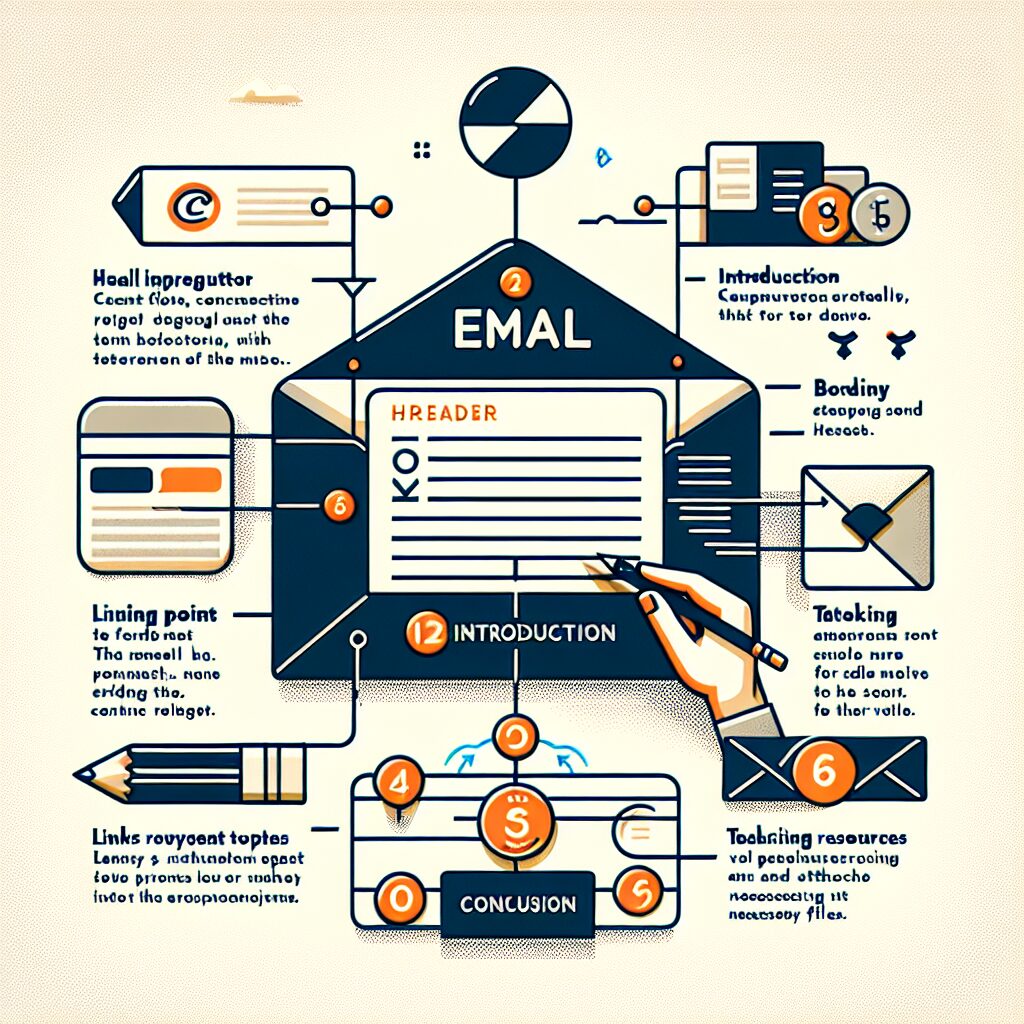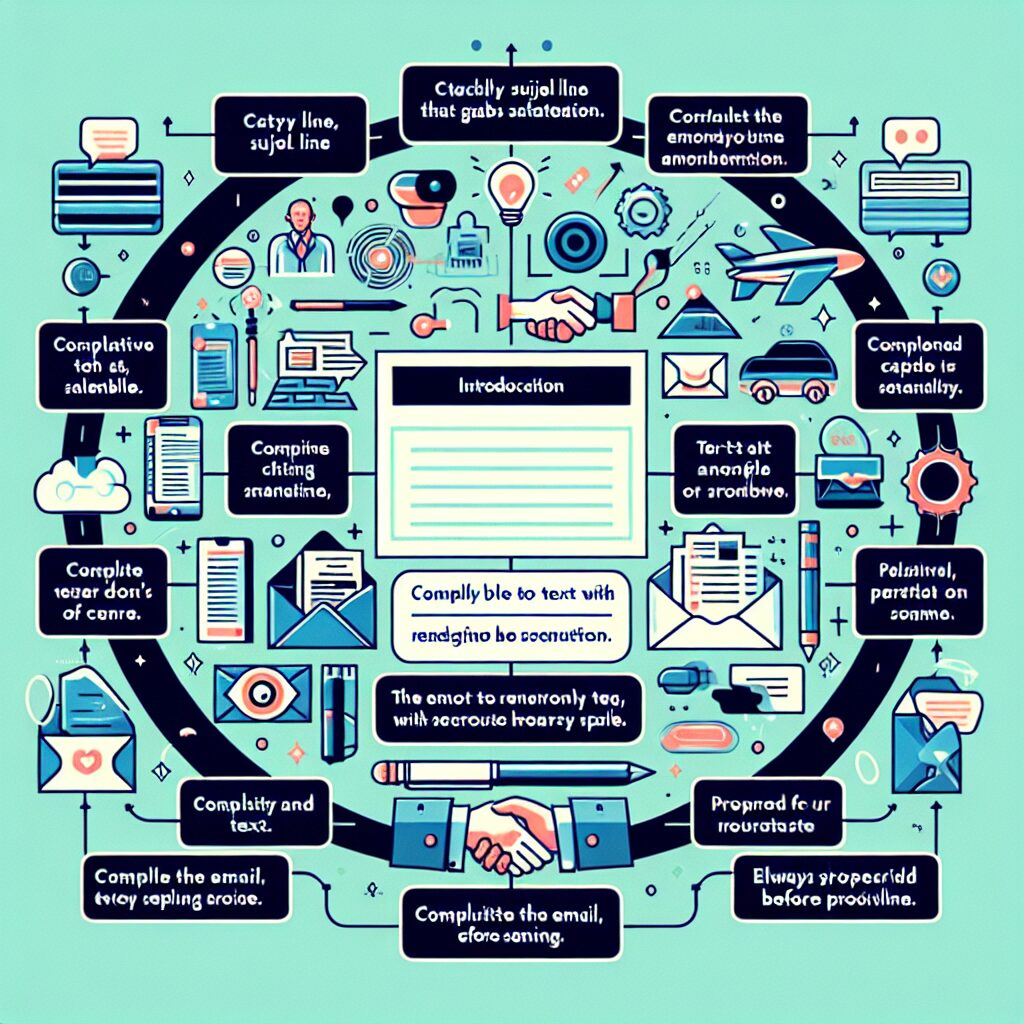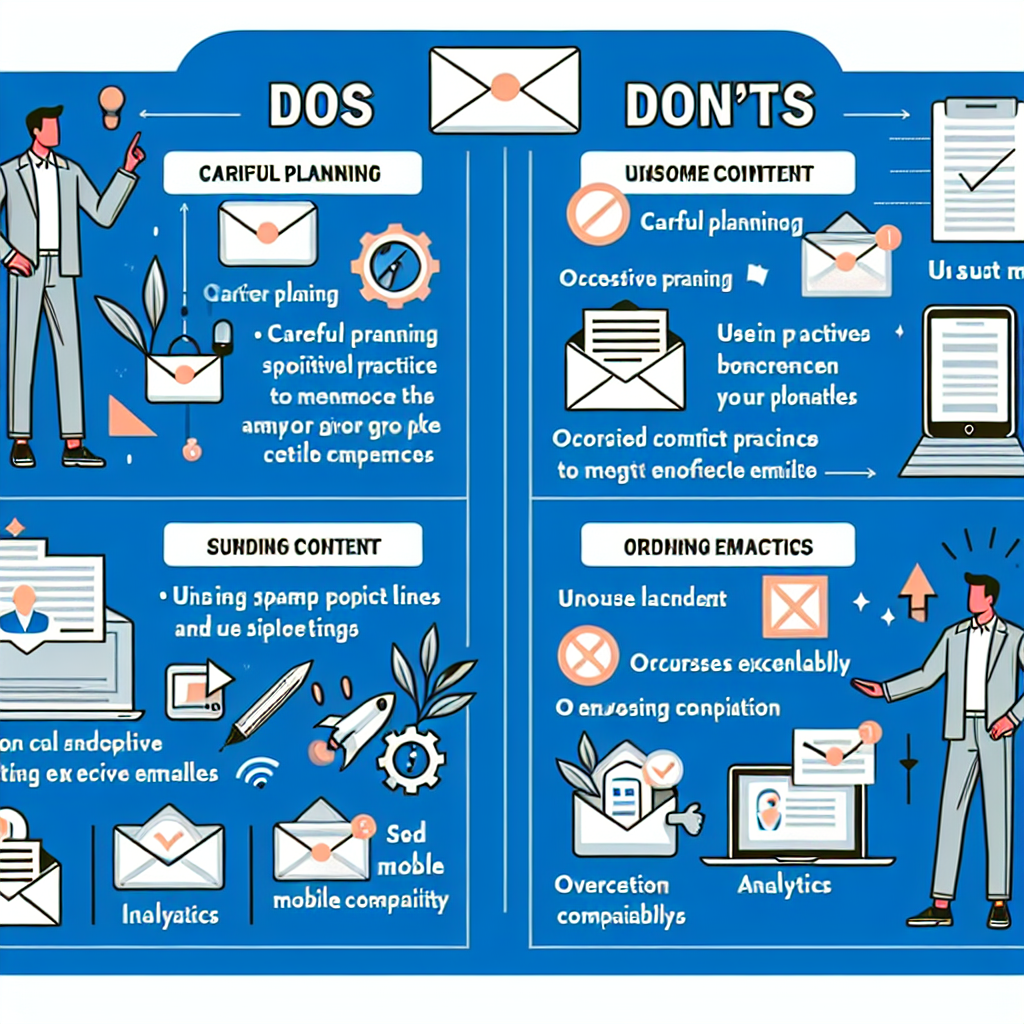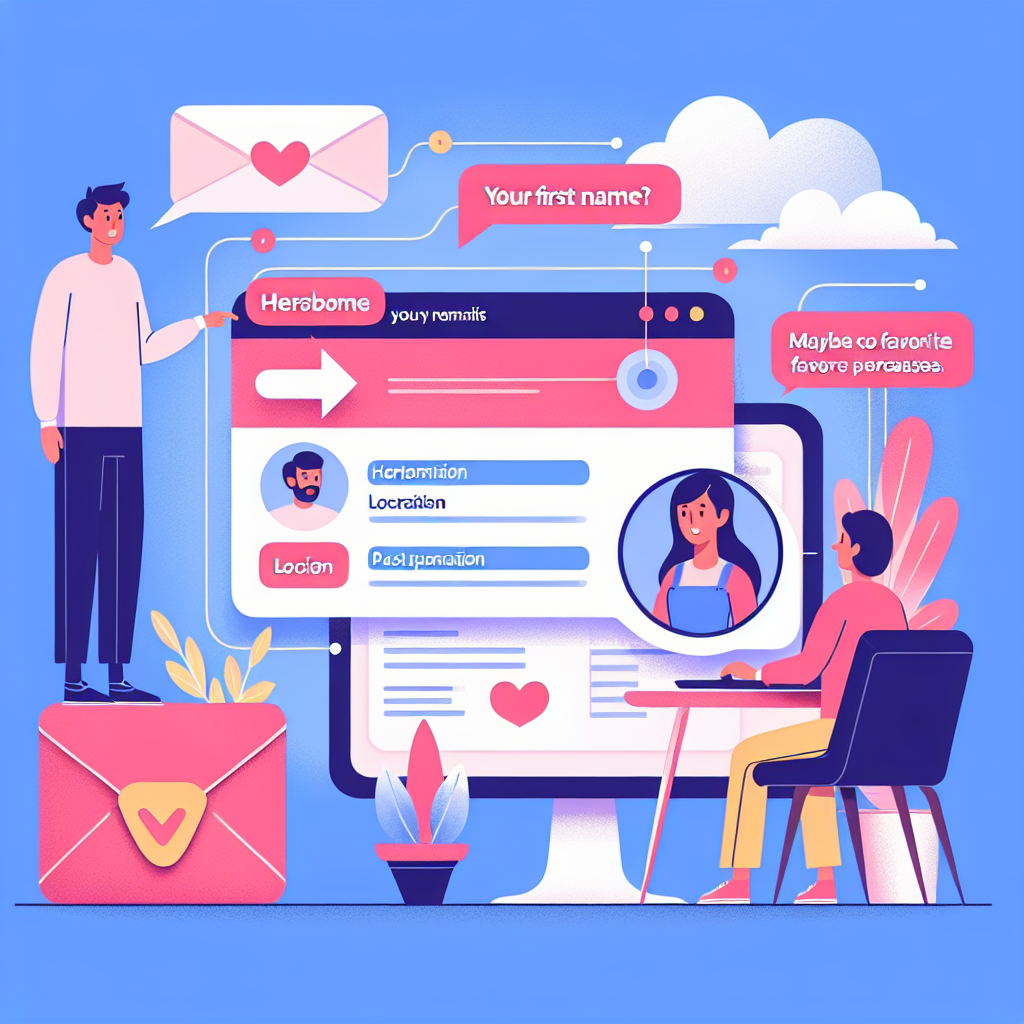
Table of Contents
- The Importance of a Clear and Concise Subject Line
- Crafting an Engaging Introduction to Hook the Reader
- Structuring the Body of the Email for Clarity and Readability
- Designing an Eye-Catching and Professional Email Layout
- Using Persuasive Language and Call-to-Action to Drive Desired Outcomes
- Proofreading and Editing Techniques to Ensure Error-Free Emails
The Importance of a Clear and Concise Subject Line
Hey there! Have you ever received an email with a subject line that left you scratching your head, wondering what it was about? We’ve all been there. That’s why today, we’re going to talk about the importance of a clear and concise subject line in your emails. Trust me, it can make all the difference in the world!
First things first, let’s talk about why a subject line is so crucial. Think of it as the first impression of your email. Just like when you meet someone for the first time, you want to make a good impression, right? Well, the subject line is your chance to do just that. It’s the first thing your recipient sees, and it determines whether they’ll open your email or send it straight to the trash bin.
So, how do you create a subject line that grabs attention and entices your recipient to open your email? Well, the key is to keep it clear and concise. You want to give your recipient a glimpse of what your email is about without overwhelming them with unnecessary details. Remember, brevity is the name of the game here!
One way to achieve clarity and conciseness is by using action words in your subject line. For example, instead of writing “Meeting Reminder,” try something like “Don’t Forget: Important Meeting Tomorrow!” See the difference? The second subject line is much more engaging and prompts the recipient to take action.
Another tip is to be specific. Instead of a vague subject line like “Update,” try something like “New Product Launch: Exciting Updates Inside!” By being specific, you’re giving your recipient a reason to open your email. They’ll know exactly what to expect and will be more likely to click on it.
Now, let’s talk about the design of your subject line. Yes, design matters even in a few words! You want your subject line to be visually appealing and easy to read. Avoid using all caps or excessive punctuation, as it can come across as aggressive or spammy. Instead, use proper capitalization and punctuation to make your subject line look professional and polished.
Lastly, let’s touch on the content of your subject line. It’s important to align your subject line with the content of your email. You don’t want to mislead your recipient with a subject line that promises one thing but delivers something completely different. That’s a surefire way to lose their trust and credibility.
So, to sum it all up, a clear and concise subject line is essential for grabbing your recipient’s attention and enticing them to open your email. Use action words, be specific, and pay attention to the design and content of your subject line. Remember, it’s the first impression of your email, so make it count!
Now that you know the importance of a clear and concise subject line, go ahead and give it a try in your next email. Trust me, you’ll notice a difference in how your emails are received and responded to. Happy emailing!
Crafting an Engaging Introduction to Hook the Reader
Hey there! Have you ever received an email that immediately caught your attention and made you want to read more? Well, that’s the power of a well-crafted introduction. In this article, we’ll explore the art of crafting an engaging introduction to hook the reader and keep them interested in your email. So, let’s dive right in!
First things first, your introduction should be concise and to the point. People have busy lives and don’t have time to read lengthy emails. Start by addressing the recipient by their name, if possible. This personal touch instantly grabs their attention and makes them feel valued. For example, “Hi John,” or “Dear Sarah,” sets a friendly tone right from the start.
Next, you want to make sure your introduction is relevant to the recipient. Think about what they care about or what problem they might be facing. By addressing their needs or interests, you show that you understand them and have something valuable to offer. For instance, if you’re reaching out to a potential client, you could start with something like, “I noticed that your company is looking to improve its online presence…”
Another effective technique is to use a compelling statistic or fact that relates to your email’s purpose. This not only grabs attention but also adds credibility to your message. For example, “Did you know that businesses that use email marketing experience a 138% increase in their click-through rates?” This immediately piques the reader’s curiosity and makes them want to learn more.
Additionally, storytelling can be a powerful tool in crafting an engaging introduction. Humans are naturally drawn to stories, so why not use this to your advantage? Start with a short anecdote or a relatable scenario that sets the stage for your email’s main message. This helps create an emotional connection with the reader and keeps them engaged. For instance, “Imagine this: You’re sitting at your desk, overwhelmed with tasks, and suddenly an email pops up promising a solution to all your problems…”
Furthermore, it’s important to create a sense of urgency or excitement in your introduction. People are more likely to take action if they feel a time constraint or a fear of missing out. You can achieve this by using words like “limited time offer,” “exclusive opportunity,” or “act now.” This creates a sense of importance and motivates the reader to keep reading. For example, “Don’t miss out on our special discount, available only until the end of the week!”
Lastly, don’t forget to include a clear call to action in your introduction. What do you want the reader to do after reading your email? Whether it’s clicking a link, replying to your message, or scheduling a meeting, make it crystal clear. This helps guide the reader and increases the chances of them taking the desired action. For instance, “Click here to learn more about our new product,” or “Reply to this email to book your free consultation.”
And there you have it! Crafting an engaging introduction is the first step towards creating a perfect email. By being concise, relevant, and using techniques like storytelling and creating a sense of urgency, you can hook the reader and keep them interested in what you have to say. So, go ahead and give it a try in your next email. Happy writing!
Structuring the Body of the Email for Clarity and Readability
When it comes to writing the perfect email, there are several factors to consider. In addition to the overall structure and design, the content of the email plays a crucial role in its effectiveness. In this section, we will explore how to structure the body of the email for clarity and readability.
First and foremost, it is important to keep your email concise and to the point. People are busy and don’t have time to read lengthy emails. Start by introducing yourself and stating the purpose of your email in a clear and concise manner. This will help the recipient understand the context of your message right from the beginning.
Next, organize your thoughts and ideas in a logical manner. Use paragraphs to separate different points or ideas. This will make your email easier to read and understand. Additionally, consider using bullet points or numbered lists to highlight key information or action items. This will help the recipient quickly grasp the main points of your message.
In terms of formatting, use a legible font and a font size that is easy to read. Avoid using fancy fonts or excessive formatting, as it can distract from the content of your email. Stick to a simple and clean design that is visually appealing and professional.
Another important aspect of structuring the body of your email is the use of transitional phrases. These phrases help guide the reader through your email and make it easier to follow along. For example, you can use phrases like “In addition,” “Furthermore,” or “On the other hand” to connect different ideas or arguments. This will make your email flow smoothly and enhance its readability.
Additionally, consider using headings or subheadings to break up your email into sections. This can be particularly useful if you are discussing multiple topics or if your email is quite long. Headings and subheadings make it easier for the recipient to navigate through your email and find the information they need.
When it comes to the content of your email, make sure to provide all the necessary information. Be clear and specific about what you are asking or requesting. Avoid vague or ambiguous language that can lead to misunderstandings. If you are providing any instructions or directions, make sure they are easy to follow and understand.
Furthermore, consider the tone and language you use in your email. Keep it professional and polite, but also try to inject some personality and warmth. Remember, you are writing to a person, not a robot. Use conversational language and avoid jargon or technical terms that the recipient may not be familiar with.
In conclusion, structuring the body of your email for clarity and readability is essential for effective communication. Keep your email concise and to the point, organize your thoughts in a logical manner, and use transitional phrases to guide the reader through your message. Pay attention to formatting, use headings or subheadings if necessary, and provide all the necessary information in a clear and specific manner. By following these tips, you can ensure that your emails are well-structured and easy to read, making them more likely to be read and acted upon.
Designing an Eye-Catching and Professional Email Layout
When it comes to email communication, the design and layout of your message can make a big difference in how it is received. A well-designed email not only catches the reader’s attention but also conveys professionalism and credibility. In this section, we will explore some tips for creating an eye-catching and professional email layout.
First and foremost, it’s important to keep your email layout clean and uncluttered. Avoid using too many colors, fonts, or graphics that can distract the reader from the main message. Stick to a simple and professional color scheme, using no more than two or three colors throughout the email. This will help create a cohesive and visually appealing design.
Next, consider the use of white space in your email layout. White space refers to the empty areas between text and images. It helps to break up the content and make it easier to read. By allowing for sufficient white space, you can create a more organized and visually pleasing email.
Another important aspect of email design is the use of images. Including relevant and high-quality images can enhance the visual appeal of your email and make it more engaging for the reader. However, be mindful of the file size of your images, as large files can slow down the loading time of your email. Optimize your images for web use to ensure a smooth and seamless experience for the recipient.
In addition to images, consider the use of icons or other visual elements to highlight important information or calls to action. Icons can help draw attention to key points and make your email more scannable. For example, you can use a checkmark icon to indicate completed tasks or a star icon to highlight important dates or deadlines.
When it comes to the overall structure of your email, it’s important to consider the hierarchy of information. Start with a clear and concise subject line that grabs the reader’s attention. Follow this with a brief and engaging introduction that sets the tone for the rest of the email. Use headings and subheadings to break up the content and make it easier to navigate.
When writing the body of your email, keep paragraphs short and to the point. Use bullet points or numbered lists to present information in a clear and organized manner. This not only makes it easier for the reader to digest the information but also adds visual interest to your email.
Lastly, don’t forget to include a clear and compelling call to action. Whether it’s directing the reader to click on a link, reply to the email, or take any other desired action, make sure it stands out and is easy to find. Use contrasting colors or bold text to draw attention to your call to action.
In conclusion, designing an eye-catching and professional email layout is essential for effective communication. Keep your design clean and uncluttered, use white space effectively, and include relevant and high-quality images. Use icons or visual elements to highlight important information, and structure your email in a logical and organized manner. By following these tips, you can create emails that not only catch the reader’s attention but also convey professionalism and credibility.
Using Persuasive Language and Call-to-Action to Drive Desired Outcomes
So, you’ve mastered the art of crafting a well-structured and visually appealing email. But what about the content? How can you ensure that your message is persuasive enough to drive the desired outcomes? In this section, we’ll explore the importance of using persuasive language and incorporating a strong call-to-action in your emails.
First and foremost, it’s crucial to understand that the words you choose can have a significant impact on how your email is received. Using persuasive language can help you grab the reader’s attention and keep them engaged throughout the message. Start by addressing the recipient by their name, as this personal touch can make them feel valued and more likely to continue reading.
Next, focus on highlighting the benefits or solutions your product or service can offer. Instead of simply listing features, emphasize how these features can positively impact the recipient’s life or business. For example, instead of saying “Our software has a user-friendly interface,” you could say “Our software’s user-friendly interface will save you time and frustration, allowing you to focus on what really matters – growing your business.”
Another effective technique is to use storytelling to create an emotional connection with the reader. Share a relatable anecdote or a customer success story that demonstrates how your product or service has made a difference in someone’s life. By appealing to the reader’s emotions, you can make your message more memorable and compelling.
In addition to persuasive language, a strong call-to-action (CTA) is essential for driving the desired outcomes. Your CTA should be clear, concise, and action-oriented. Instead of using generic phrases like “Click here” or “Learn more,” be specific about what you want the reader to do and why they should do it. For example, “Sign up now to receive a free e-book that will revolutionize your marketing strategy” or “Claim your exclusive discount by ordering today.”
To make your CTA even more effective, consider incorporating a sense of urgency. Limited-time offers or deadlines can create a sense of FOMO (fear of missing out) and prompt the reader to take immediate action. For example, “Don’t miss out on this exclusive offer – it expires in 24 hours!” or “Only 5 spots left – secure your spot now!”
Lastly, don’t forget to include a sense of gratitude and appreciation in your email. Expressing genuine thanks for the recipient’s time and consideration can go a long way in building a positive relationship. A simple “Thank you for considering our offer” or “We appreciate your support” can make the reader feel valued and more inclined to respond positively.
In conclusion, using persuasive language and a strong call-to-action in your emails can significantly increase the chances of driving the desired outcomes. By addressing the recipient personally, highlighting the benefits of your product or service, incorporating storytelling, and creating a sense of urgency, you can make your message more compelling and persuasive. Remember to express gratitude and appreciation to foster a positive relationship with the reader. So go ahead, put these tips into practice, and watch your email conversions soar!
Proofreading and Editing Techniques to Ensure Error-Free Emails
Have you ever sent an email only to realize later that it contained embarrassing typos or grammatical errors? We’ve all been there. But fear not! In this article, we will explore some proofreading and editing techniques that will help you craft error-free emails every time.
First and foremost, it’s important to take a step back and give yourself some distance from the email before proofreading it. This will allow you to approach the text with fresh eyes and a clear mind. It’s amazing how many errors you can spot when you’re not too close to the content.
Once you’re ready to begin proofreading, start by reading the email out loud. This may seem like a strange suggestion, but it’s actually a very effective way to catch errors. When we read silently, our brains tend to fill in missing words or correct mistakes automatically. By reading aloud, you force yourself to slow down and pay closer attention to each word.
As you read, pay special attention to punctuation. Commas, periods, and other punctuation marks can greatly affect the meaning of a sentence. Make sure you have used them correctly and consistently throughout your email. If you’re unsure about a particular punctuation rule, consult a grammar guide or use an online grammar checker.
Another common mistake to watch out for is homophones. These are words that sound the same but have different meanings and spellings. Examples include “their” and “there,” “your” and “you’re,” and “its” and “it’s.” These errors can easily slip through the cracks, so be extra vigilant when proofreading.
In addition to checking for spelling and grammar errors, it’s also important to ensure that your email is clear and concise. Avoid using overly complex sentences or jargon that may confuse the reader. Instead, strive for simplicity and clarity. If a sentence seems too long or convoluted, consider breaking it up into smaller, more digestible chunks.
Furthermore, pay attention to the overall structure and flow of your email. A well-organized email is easier to read and understand. Start with a clear introduction that states the purpose of your email, followed by the main body where you provide the necessary information or request. Finally, end with a concise conclusion or call to action.
When it comes to editing, don’t be afraid to make revisions. Read through your email multiple times, making changes as needed. Look for opportunities to tighten up your writing and eliminate any unnecessary words or phrases. Remember, brevity is key in email communication.
Lastly, before hitting that send button, take a moment to double-check the recipient’s email address. Sending an email to the wrong person can lead to all sorts of problems. It’s a simple step that can save you from potential embarrassment or misunderstandings.
In conclusion, proofreading and editing are essential steps in ensuring error-free emails. By taking the time to carefully review your content, paying attention to punctuation, homophones, and overall clarity, you can avoid embarrassing mistakes and communicate effectively. So, the next time you’re about to send an email, remember these techniques and craft the perfect message. Happy emailing!


